| Spotted Asses |
| Not all donkeys are black, or brown, or slate (gray-dun) , or solid colored. Some are spotted (pinto). Please note they are NOT Paints. Paint is a Horse breed with specific bloodline requirements. The donkey is referred to as: "Brown and white spotted" (or whatever base color). The pattern is simply termed "Spotted" |
| The Spotted pattern in donkeys looks visually closest to the Overo pattern in horses. It also acts very close in genetic factoring to the overo. To get a spotted donkey, ONE PARENT MUST BE SPOTTED. There are no VERIFIED cases of spotted donkeys being produce from the mating of two solid-colored donkeys. HOWEVER, there is a minimal spot pattern that is often overlooked by horse people. White markings are not common in donkeys as they are in horses. A star is the only common marking. Unlike in horses, when a donkey has a blaze and a white foot, it is genetically spotted. It is just the VERY MINIMUM expression of the spotting pattern. We call this Masked Spotting Factor. Any white on a donkey (other than a forehead star, and the usual "White Points" of the muzzle, eyerings and belly needs to be noted. White markings anywhere other than these places may mean a spotted donkey. Spotted in donkeys can also range from the very minimal (masked spotting, with just a blaze) to nearly white with only a dark spot on the head. There is a definate progressive pattern to the white markings in the spotted donkey, just as there are in the other Pinto-type spotting patterns in horses (such as Tobiano, overo, sabino, and splash white). It is not unusual to see a spotted donkey that has "displaced" darker spots over the normal spot pattern. This colt shows some evidence in the middle spot on the barrel (looks a bit like a show rosette). The genetics are still being defined on this. Normal markings occur in the areas not covered by white spots, which means they can still have crosses, garters, etc. |
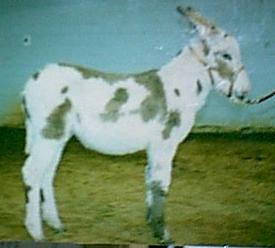 |
| This donkey is Masked Spotted - just a blaze face, no body spots, but spotted genetically nonetheless. |
| This Miniature Donkey is Dark Brown and White Spotted. Under description, it would be listed as "Mostly white. No eyepatches. Partial bonney. Dark shoulder and flank spots, partial cross, all 4 legs white". This is close to the extreme of the mostly-white donkeys. Mapped (peacock, halo) edges on small spots are quite common. Note how the spots seem to stay in the cross-areas (dorsal, shoulder) and usually around eyes and on the Bonnet (poll, ears). |
| So how do I breed for spotted donkeys? Click HERE |
| Equine Basics Lingo Miniature Donkeys Standard Donkeys Mammoth Jackstock Longeared Hybrids - Mules and Hinnies FAQ about Showing and Registration FAQ about Color COLOR Definitions Spotted Asses Breeding for Spots Photos. Mule Coloration the ADMS Zebrass? Links Hee Haw Books Fun Transporting Tail-less donkeys? |
 |
| This is the "midrange" of markings, wehre the animal is about half-dark base, half white overlay spots. Note that the face has a blaze and snip but is NOT bald or apron (the nostrils and lip are dark, but the amount of white on the head in an increase-weighted illusion due to the normal "White points" (eyerings, muzzle, belly - the pangare) on a donky. Base - dk Gray-dun. This is MDR 35000, Chester. |
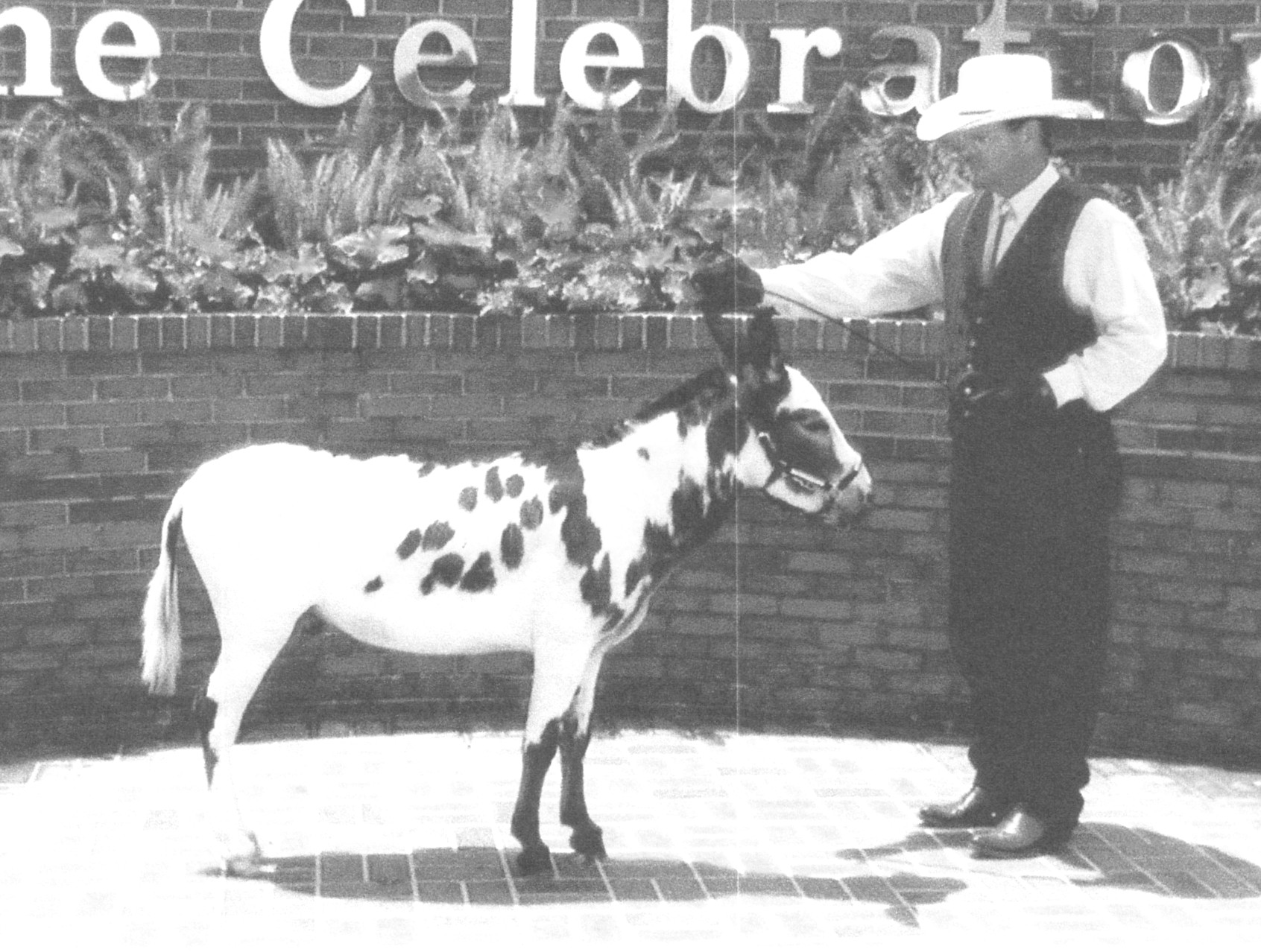 |
| Sorry for the black and white, but these were prepped for the BRAYER magazine. This is a Tyger-spotting pattern, a variant of the spotting seen in donkeys. It is not appaloosa, nor is it frame. Of the two patterns, the tyger-spot is most likely to pass along in the same form and degree to offspring. In other spotted donkeys, the masked-spotted may produce a masked, 50%, or mostly-white. Tyger-spots are more likely to produce a similar degree and pattern as themselves. (There does appear to be a degree scale in tyger spots also, - the MSF tyger will usually have dark spots in the blaze. This is Kolleman's Pandy. Below are two foals sired by this jack, both out of solid-colored (non-spot) jennets. The resemblance in pattern is very apparent. (3 foals to date, all 3 tyger spotted!) |
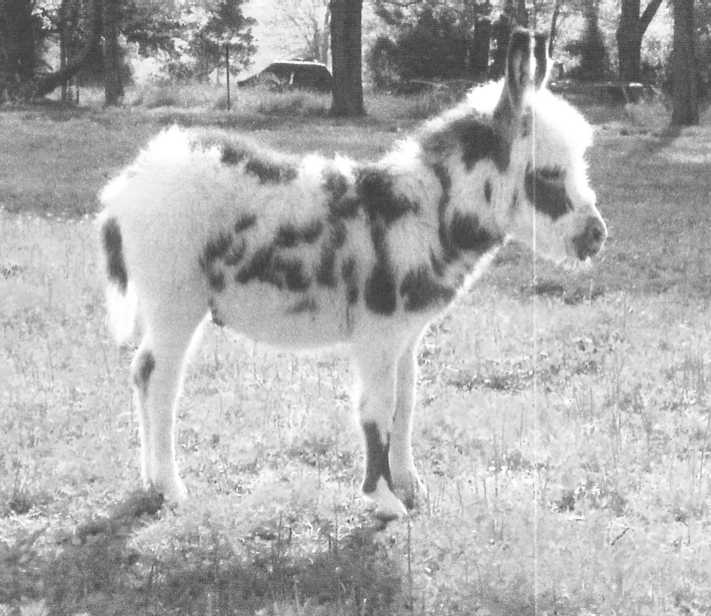 |
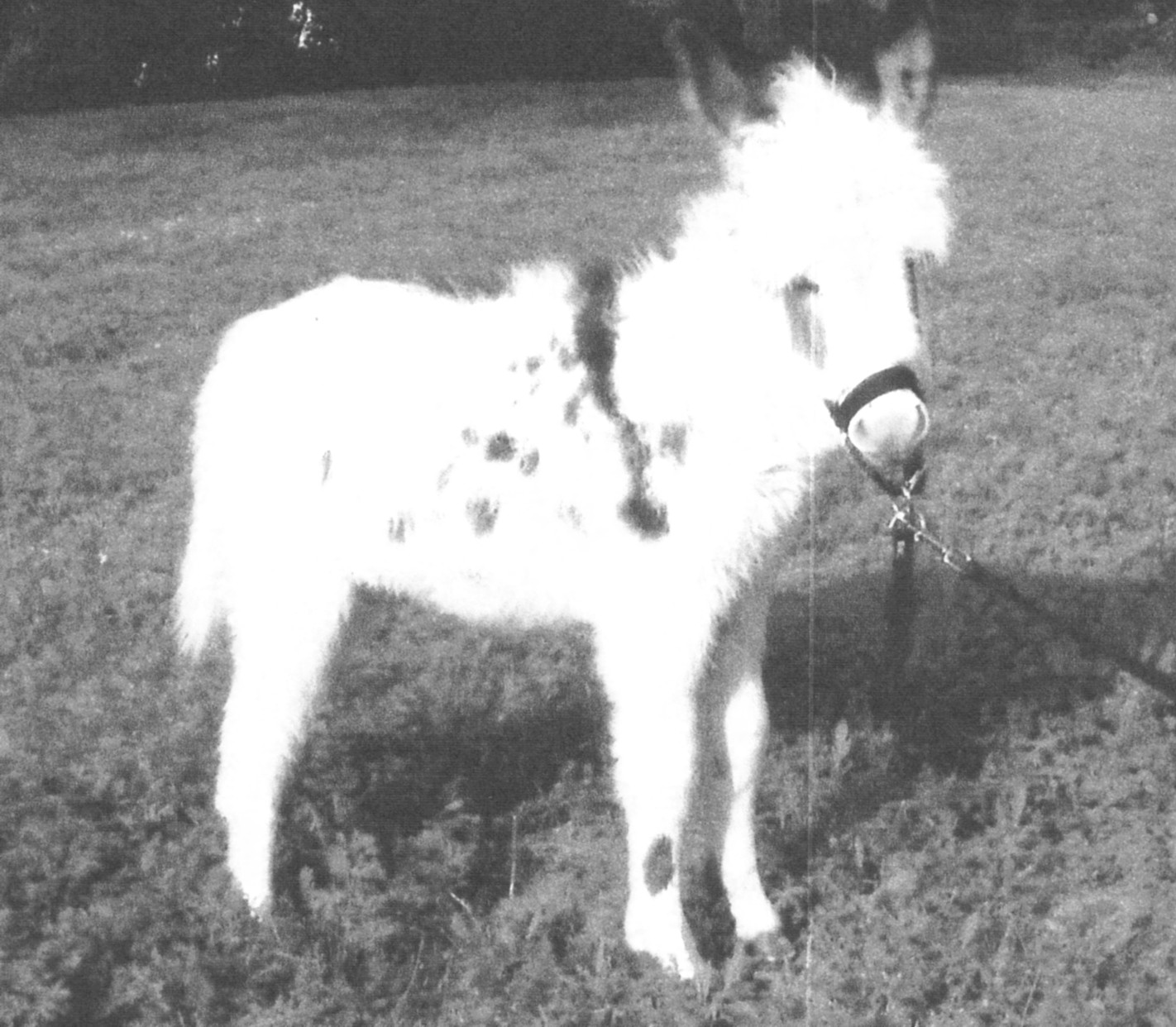 |
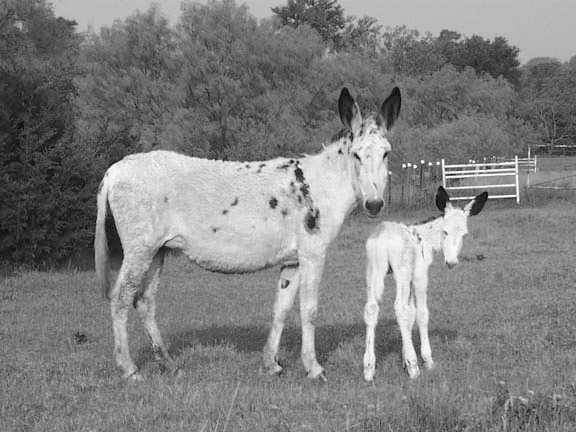 |
| Here is a black-and-white Tyger-spotted jennet and her matching foal. The sire of the foal is a spotted jack carrying the "Frame" type pattern, but the foal is marked up almost exactly like Mom. He is named Tyger King and is owned by Matt & Heidi McCarty of Texas. |
 |
| An unrelated spotted donkey, but the pattern is quite similar, as is the degree of dark base still remaining (not covered up by the white spotting. Remember, the animals are base-gray-dun (or brown, in this case) with white spots, not white with brown spots on top, although it may often look that way. Another unrelated donkey, but again note the similarity in pattern. More photos of the rance of white (from minimal to maximum) to be added as soon as possible!!! Thanks for your patience!!! Leah |